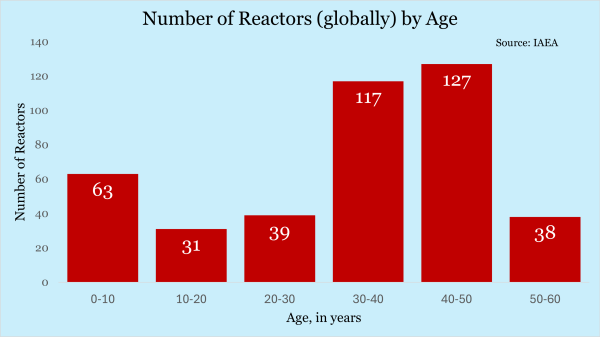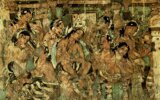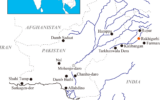
Proboscis monkeys (Nasalis larvatus)
Subscribers of "Current Affairs" course can Download Daily Current Affairs in PDF/DOC
Subscribe to Never Miss an Important Update! Assured Discounts on New Products!
Must Join PMF IAS Telegram Channel & PMF IAS History Telegram Channel
- Context (DTE): Nasalis larvatus monkey is a topic of study for its large, bizarre nose.
- One of the largest monkey species in Asia, Proboscis monkeys are endemic to the island of Borneo.

Credits: DTE
Nose: A status symbol
- Unique nose: Enormous, pendant, tongue-shaped noses of adult males; those of juveniles and females are shorter and upturned.
- The monkey’s enormous nose, along with its pink face and rotund belly, led people in the Indonesian half of Borneo to call them ‘Dutchman monkeys’.
- Social groups tend to be large-nosed male-led harems of 6-16 individuals. Neighbouring groups sometimes meet and eat together.
- These older, dominant and large-nosed males don’t easily tolerate other large-nosed males, often trying to ward them off aggressively with deep honks and “nasal roars”.
- Young adult males with smaller noses often live in all-male bachelor groups and don’t tend to fight aggressively with each other. Bachelor males on getting older and large (and large-nosed) enough to compete with males that are part of a breeding group.
Evolution of large nose
- The bony chamber of the skull sits behind the fleshy nose.
- Previous research that looked at the bulbous nose in males suggests it evolved to advertise status.
- A new study has linked the shape of the nose to “honks”, the roar sounds. Male nasal cavities were low and long compared to females.
- This allows males to build up resonance (sound vibration) in their nasal cavities, allowing them to emit deeper and louder calls through their noses.
- Nasal aperture shape in males resembles eggplant, while in females, it resembles upside-down pear.
- This further supports the idea that the nasal cavity of male proboscis monkeys underwent an evolutionary change for the purpose of making certain sounds.
Other physical properties and behaviour
- Habitat: Coastal mangroves, peat swamps and riverine forests.
- Conservation status: IUCN – EN, CITES – Appendix I.
- The male sexual organ is permanently erect. The pelt is greyish-white ventrally and reddish dorsally.
- Sexual dimorphism is pronounced in body size and nose shape. Males are heavier. Babies are dark-furred with a bluish face.
- Strongly arboreal and Folivorous (favourite diet is leaves).
- They can swim quite well and have webbed fingers and toes.







![PMF IAS Environment for UPSC 2022-23 [paperback] PMF IAS [Nov 30, 2021]…](http://pmfias.b-cdn.net/wp-content/uploads/2024/04/pmfiasenvironmentforupsc2022-23paperbackpmfiasnov302021.jpg)











